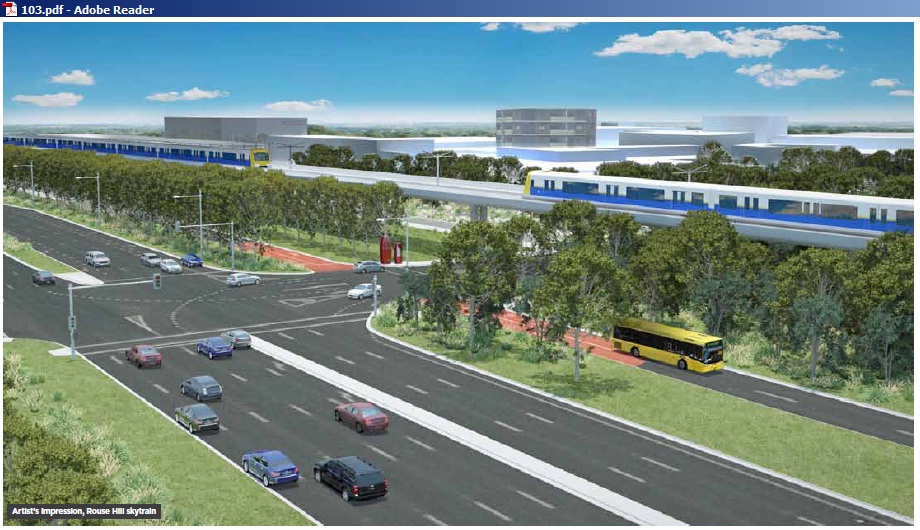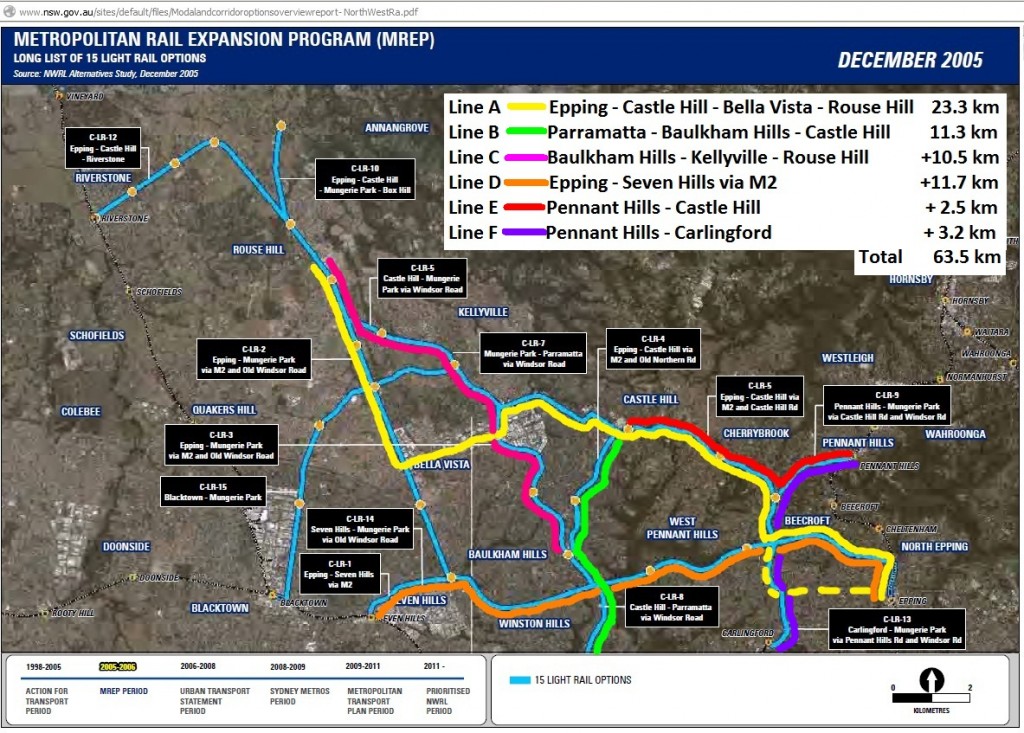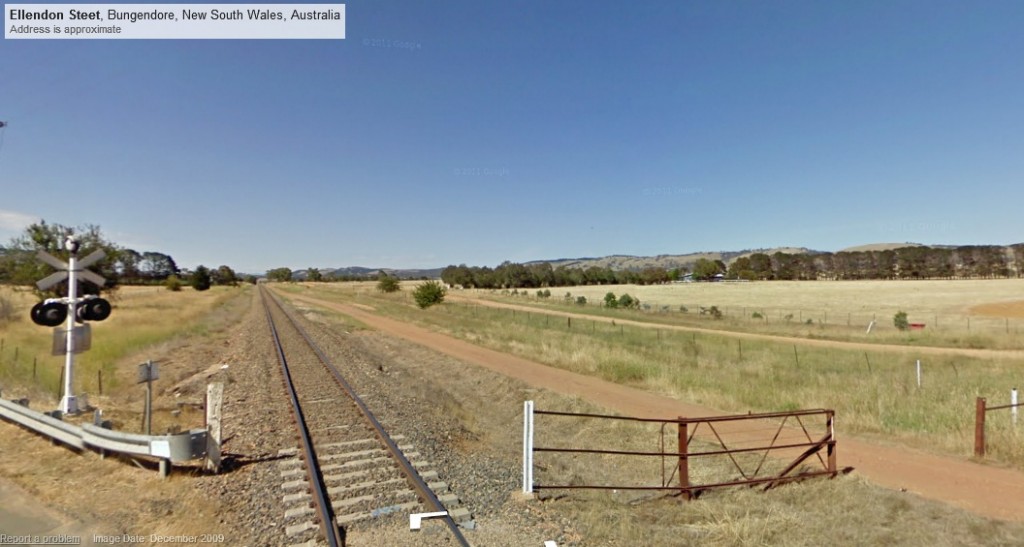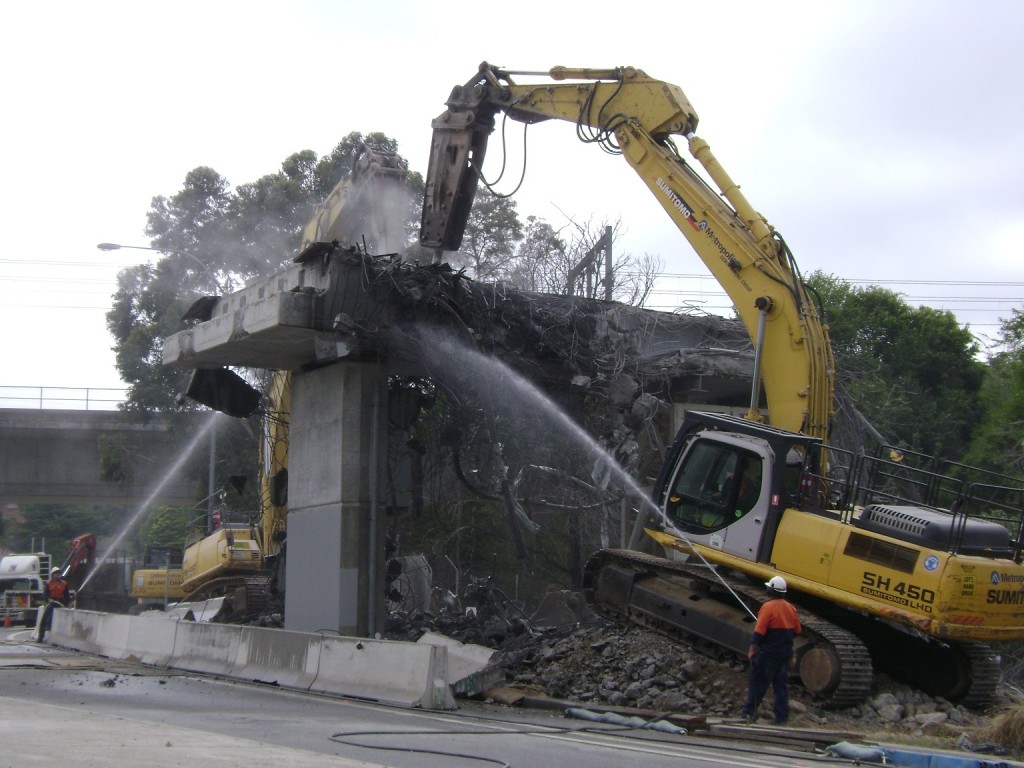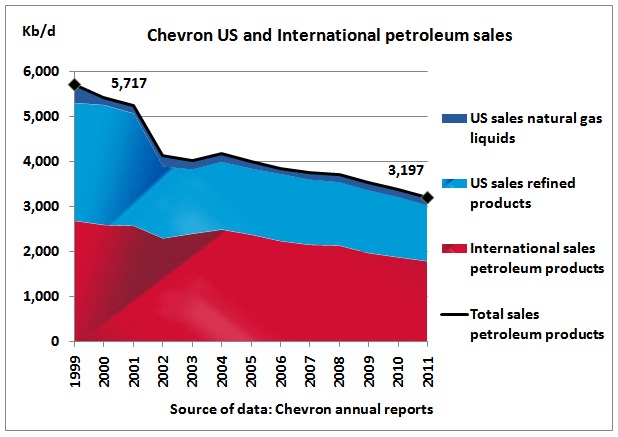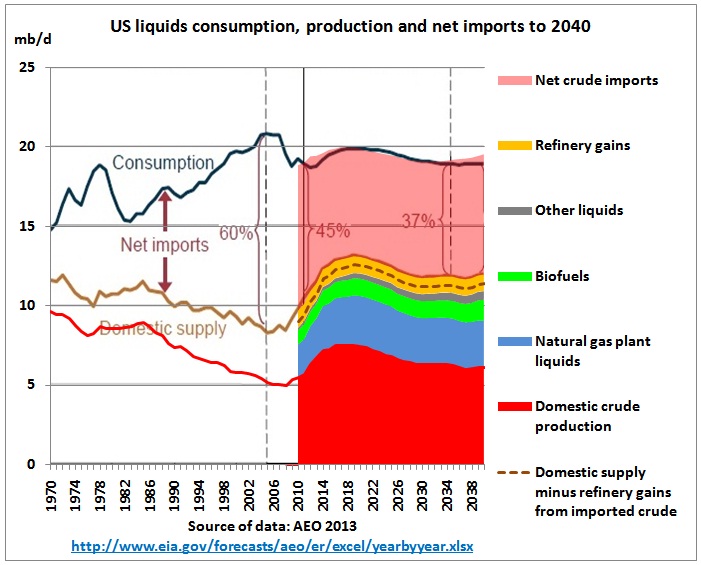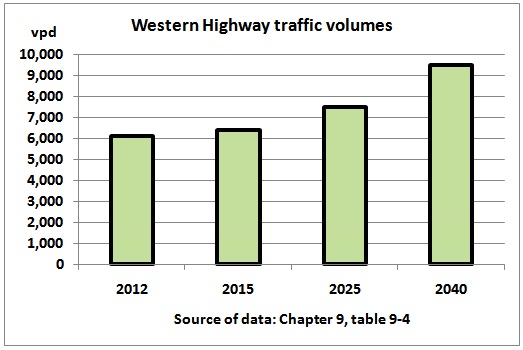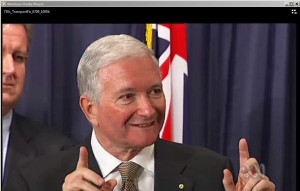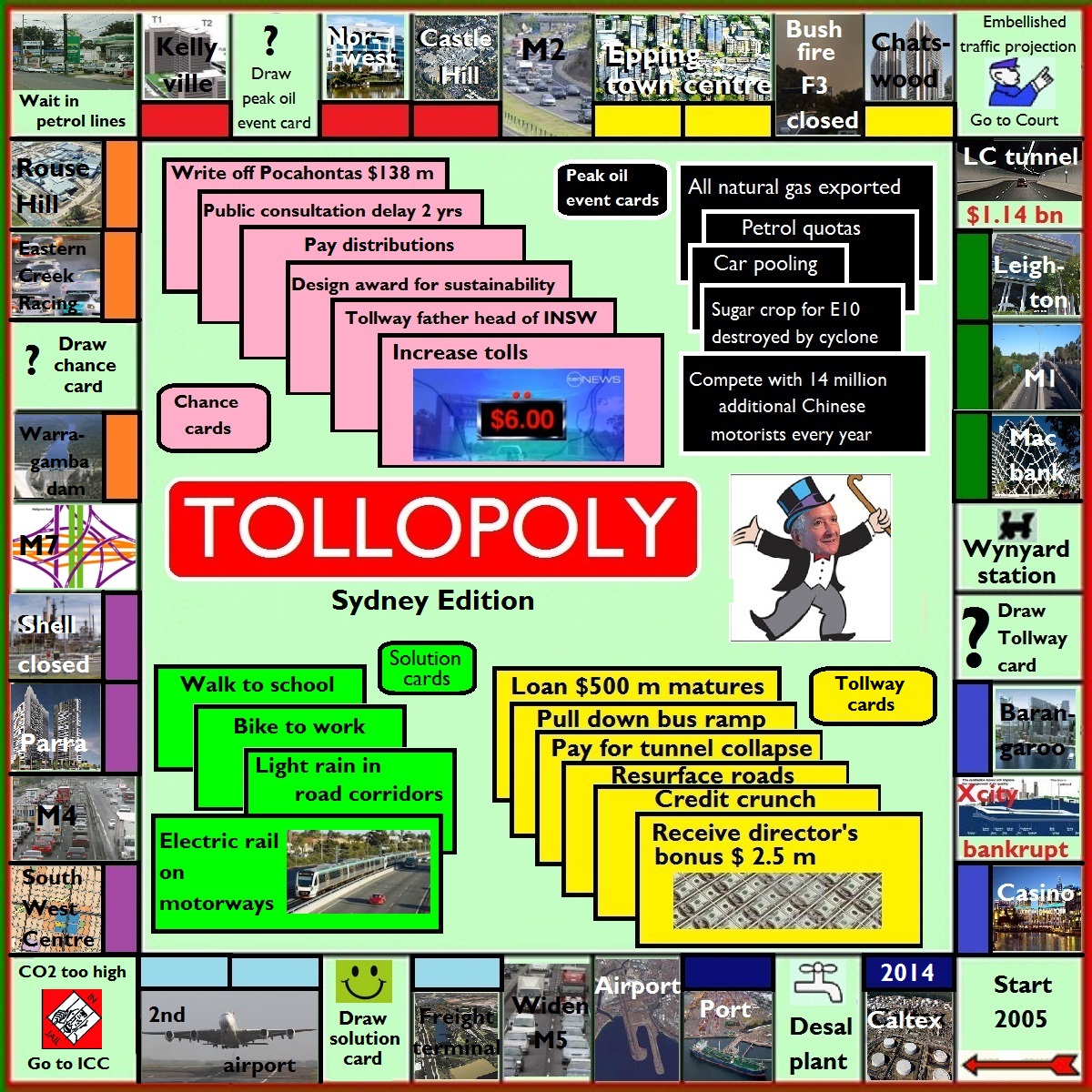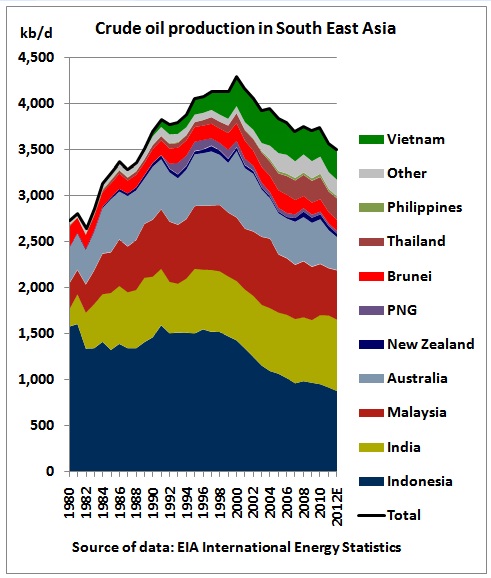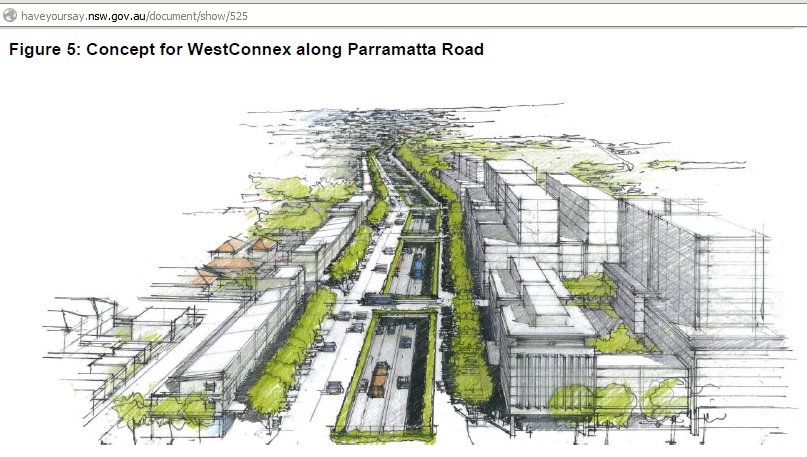Contents:
1 Australian government failed to update its internal peak oil report
2 NSW government can’t deal with peak oil
3 Media dropped ball on peak oil and impact of unconventional fuels on global warming
4 Consultants analyse their own embellished traffic projections and make money with it
5 The Asian Century myth gets everyone thrilled
Summary:
The public is being told by the Australian Federal government in its Energy White Paper (EWP 2012) that peak oil is in the future, not before 2035 due to unconventional oil. It quotes the IEA instead of independently updating its own internal research in BITRE report 117 which found in 2009 that peak oil is around 2015. The government considers Australia’s liquid fuel security as high although imports of fuels increase as a result of Australian refineries closing. These fuel imports would mainly come from Singapore and other Asian refineries where fierce competition can be expected in a booming car and truck market, especially in China. The EWP concedes a possible global oil demand peak after 2020 due to high oil prices but does not see these high oil prices as a result of peaking crude oil production since 2005. Increased CO2 emissions from unconventional oil (and gas) are not mentioned so that Australia can continue to “safely and sustainably” export coal and gas, the latter being the only viable alternative transport fuel to replace petrol and diesel. Therefore, the government continues to ignore the physics of our energy and climate reality.
The Australian media including ABC TV – once at the forefront of oil crunch reporting and interviews with NASA climatologist James Hansen – are parroting the government line and play into the hands of vested business interests without doing any independent, critical analysis of their own. The Asian Century myth is the best example. It will last as long as oil imports (mainly from the Middle East) can increase.
Consequently, State governments and their self-interested consultants continue in overshoot mode by building and planning additional, oil dependent infrastructure like highways, toll-ways and airport extensions. The financial sector –also unable or unwilling to assess the future oil and energy supply situation – is happy to prepare often complex financing deals for these projects, ensuring a steady flow of commissions irrespective of past and future failures.
With this inherent, systemic weakness it can be guaranteed that one day, when peak oil turns into a physical problem or when armed conflicts in the Middle East impact on oil supplies, the system will crash and the public will wake up to some unpleasant oil decline facts with no time (and money) remaining to mediate the impact of oil decline.
1 Australian Federal Government
In the February 2012 budget estimate hearings Industry Minister Kim Carr refused to table the March 2009 BITRE report 117 on peak oil saying it was not up to scratch.
Senator LUDLAM: You can table it, Minister.
Senator Carr: The answer is no.
24/2/2012
Australian Government kicks own goals in Senate peak oil debate (peaky leaks part 3)
http://crudeoilpeak.info/australian-government-kicks-own-goals-in-senate-peak-oil-debate-peaky-leaks-part-3
What’s worse, the government’s final version of the Energy White paper (“Australia’s Energy Transformation”), released in November 2012 and after a long 3 ½ years of work, still had not done an update of that peak oil report. On page xvi we read:
“Because of the commercial potential of unconventional sources of petroleum, the International Energy Agency (IEA) believes that there is a very low probability of reaching global supply limits (so-called ‘peak oil’) in the period to 2035 (IEA 2011a)”
http://www.ret.gov.au/energy/Documents/ewp/2012/Energy_%20White_Paper_2012.pdf
Well, global crude oil supply limits were reached already in 2005 and the following years with the result of oil prices going up 4-fold. It is interesting to note that peak oil is still put in quotation marks as if it didn’t exist. Let’s compare BITRE 117 forecasts with actual crude production as reported by EIA:
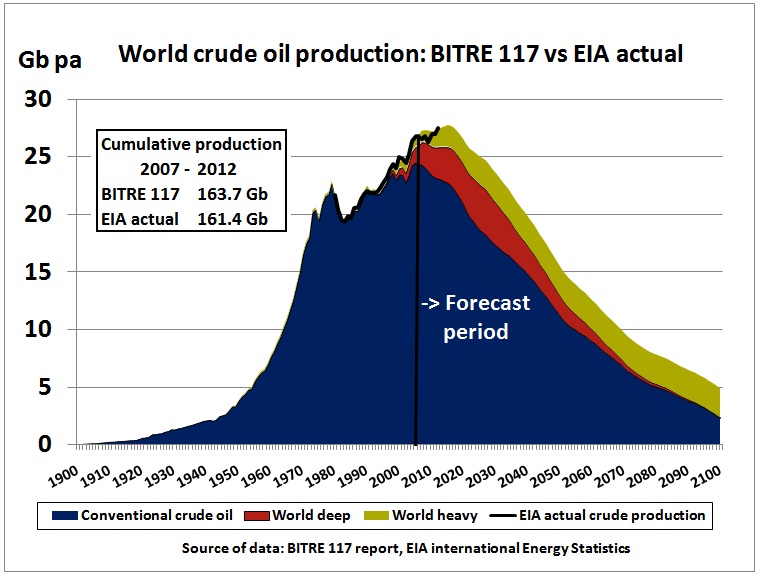 BITRE 117: http://ianmcpherson.com/blog/audio/Australian_Govt_Oil_supply_trends.pdf
BITRE 117: http://ianmcpherson.com/blog/audio/Australian_Govt_Oil_supply_trends.pdf
EIA crude oil data are from here: http://www.eia.gov/cfapps/ipdbproject/iedindex3.cfm?
Actual cumulative production since the forecast was made is lower than the BITRE projection – which was based on a modified Hubbert linearization, an oil geological/statistical concept. The lower production can be explained by negative feedback loops of the process of peaking in which the convergence of accumulated debt and high oil prices triggered the financial crisis, resulting in a weak economy.
2 NSW government
2.1 Long Term Transport Masterplan
Here is an example how the NSW government fails to deal with peak oil
Discussion paper, February 2012
Reference to peak oil is made but the conventional peak oil year is still seen to be debated although it happened already in 2006 (Birrol, IEA). Under chapter 4 “The 20 year challenge” a timid attempt is made in the right direction but ultimately the thread is lost in other chapters. Quote:
“4.4 What are the major energy challenges for the next 20 years?
Like the rest of the world, NSW faces complex challenges relating to the supply and use of energy. ‘Peak oil’ is defined as the point in time when oil production reaches its maximum annual rate, after which the annual production rate declines each year. The point in time when supplies of conventional oil will peak is a hotly debated topic. However, while this debate occurs and solutions are explored, the demand for oil continues and the cost of oil increases. In Australia, demand for petroleum is projected to increase from more than 750,000 barrels per day to over 1.2 million barrels per day by 2029–30. This is an increase of almost two per cent per year over the period.
In July 2012, the Australian Government’s carbon pricing mechanism will commence, with a price that will be fixed for the first three years. There is an ongoing and strong international focus on reducing greenhouse gas emissions. Australia’s transport systems, including those of NSW, are heavily dependent on cars and road freight, which are both highly vulnerable to the rising cost of energy. Road transport is responsible for 75 per cent of transport-related oil consumption and aviation another 16 per cent. (p 34)
Prices of oil and electricity are likely to remain an unpredictable factor due to the introduction of carbon pricing legislation and uncertainty as to the availability of oil. Relative fuel costs are an important determinant of fuel use. Rail is a major user of electricity and all public transport services will need to accommodate changes in fuel prices, particularly oil. (p 35)
http://haveyoursay.nsw.gov.au/document/show/136
As Australia is already consuming 1 mb/d the NSW government can’t even get the Australian oil consumption data right. More details are in this post:
30/4/2012
NSW Transport Master Plan debates conventional peak oil 2006, assumes continuing oil age
http://crudeoilpeak.info/nsw-transport-master-plan-debates-conventional-oil-peak-2006-assumes-continuing-oil-age
Then, later in 2012, neither the following Transport Plan draft of September nor the final version of December even mention peak oil although vulnerability to oil price increases is among the issues listed
Draft Transport Plan, September 2012
The energy challenge chapter has been removed and replaced by “Growth challenges in Greater Sydney” which looks like being less threatening because the word ‘growth’ is seen as positive. Quote:
The cost and availability of oil and the rising cost of electricity will also have a direct influence on the choices we make in procuring the most environmentally sustainable and energy efficient technologies to power our transport fleets. (p 37)
3. Developing new transport connections for greenfield growth areas as they grow: to support new residential and employment areas, namely the North West Growth Centre, the South West Growth Centre and the Western Sydney Employment Area by embedding public transport services and reducing car dependency which can limit transport access and increase vulnerability to oil price increases. (p 166)
So reducing car dependency is used only as an argument to justify expensive rail (tunnel) projects for massive new housing estates in Sydney’s (hot) West while for the majority of existing motorists there is no coherent public transport plan which would reduce the use of cars. Decisions to widen the M2 and M5 had long been made before even the 1st chapter of the discussion paper was written.
Final Transport Plan, December 2012
The same wording as in the draft has been repeated on pages 35 and 176, but this time under the heading “1.7 Transport and the Environment”
Clearly, the NSW government treats energy and oil as a hot potato and does not know where to put it, let alone how to deal with it.
My submission is here:
2.2 North West Rail Link
This expensive rail tunnel needs plenty of high rise flats around its stations to fill the trains as motorists are supposed to use the 3rd lane on the M2 which will be completed soon.
This artist impression from the North West Rail Link documentation demonstrates there is no intention to replace car traffic by public transport. Why have 3 lane arterial roads when there is a high capacity rail link and a bus way?
My submission with light rail alternatives is here:
2.3 NSW budget
Similarly, the NSW budget wasted a lot of money on oil dependent infrastructure, as detailed in this post:
3/8/2012 Poor peak oil preparation rating for NSW budget 2012/13
http://crudeoilpeak.info/poor-peak-oil-preparation-rating-for-nsw-budget-2012
2.4 NSW infrastructure
Nothing is prepared for the period of oil decline.
Main railway line from Sydney to Australia’s capital Canberra: gates closed for 2nd track until a very fast train mirage appears on the horizon.
5/2/2012 Australian peak oil report ignored for urgent Sydney Canberra rail upgrade (Peaky Leaks Part 2)
http://crudeoilpeak.info/australian-peak-oil-report-ignored-for-urgent-sydney-canberra-rail-upgrade-peaky-leaks-part2
12/2/2012 Car addicted Sindney destroys bus ramp near rail hub as tollway debt increases 60% at least
http://crudeoilpeak.info/car-addicted-sindney-destroys-bus-ramp-near-rail-hub-as-tollway-debt-increases-60-pct-at-least
Coal trains
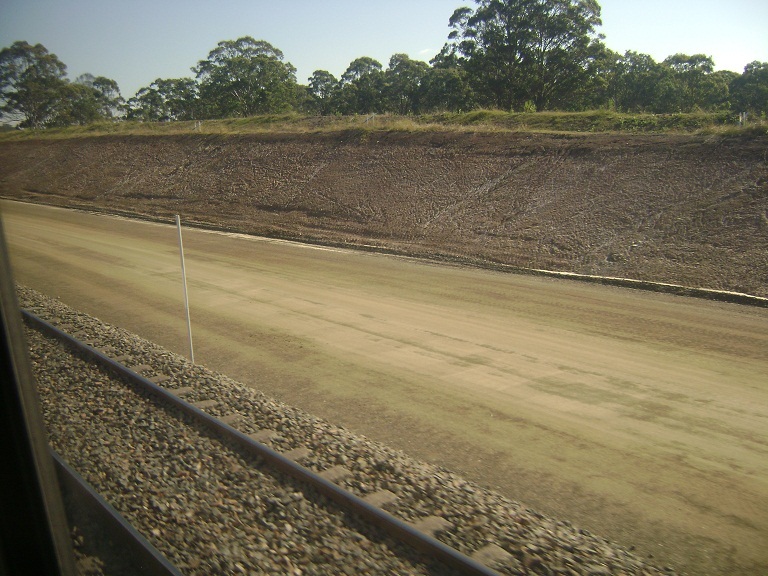 While passenger services run on single track, perfect engineering work for the wrong project is done in the Hunter valley: 3rd coal track.
While passenger services run on single track, perfect engineering work for the wrong project is done in the Hunter valley: 3rd coal track.
NASA climatologist James Hansen in a testimony to the Iowa Utility Board, in 2007
“For most of 20 miles there were trains parked, engine to caboose, half of the cars being filled with coal. If we cannot stop the building of more coal-fired power plants, those coal trains will be death trains – no less gruesome than if they were boxcars headed to crematoria, loaded with uncountable irreplaceable species.”
http://www.columbia.edu/~jeh1/2007/IowaCoal_20071105.pdf
Impressions from a rail trip Sydney – Armidale:
28/5/2012
NSW regional railway clock stopped at midnight but Hunter coal trains are rolling
http://crudeoilpeak.info/nsw-regional-railway-clock-stopped-at-midnight-but-hunter-coal-trains-are-rolling
Tollway debt
14/8/2012 Transurban does not pay back its debt
http://crudeoilpeak.info/transurban-does-not-pay-back-its-debt
20/12/2012 Wanton destruction of bus ramp in Sydney continues
http://crudeoilpeak.info/wanton-destruction-of-bus-ramp-in-sydney-continues
Closure of rail line
21/12/2012 Last X’mas train from Sydney to Newcastle CBD
http://crudeoilpeak.info/last-xmas-train-from-sydney-to-newcastle-cbd
2.5 Sydney’s 2nd airport
This is an enduring issue and a treat for all financial planners eager to invest monies from overflowing super funds. Few look at the actual statistics, not to mention the long-term decline in crude oil production.
7/10/2012 Peak oil lite: Sydney Airport passenger traffic 15% below 2009 forecast (part 1)
http://crudeoilpeak.info/peak-oil-lite-sydney-airport-passenger-traffic-15-pct-below-2009-forecast-part-1
2.6 But where will the energy come from?
NSW has big plans for the future but no idea where the energy will come from (except assuming coal seam gas will be extracted from under your house)
9/5/2012 Queensland plans to export more than 10 times the gas NSW needs (part 3)
http://crudeoilpeak.info/queensland-plans-to-export-more-than-10-times-the-gas-nsw-needs-part-3
Big Sydney, big problem
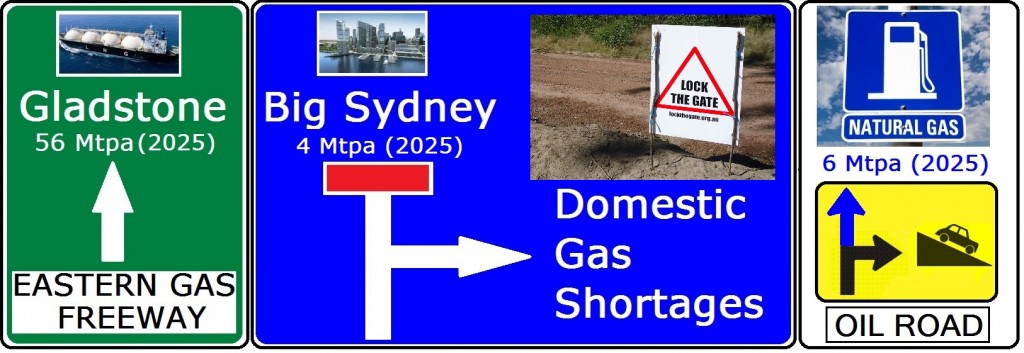
http://crudeoilpeak.info/wp-content/uploads/2012/07/Big_Sydney_big_problem.pdf
Sydney has reached the limits to growth. Affordable housing has become a fantasy.
http://crudeoilpeak.info/wp-content/uploads/2012/07/The_Fantasy_of_Affordable_Housing.pdf
3 Media reporting
3.1 US shale oil
The year started with an article in the Telegraph titled
“All evidence of this treachery went down the memory hole”
referring to the BITRE 117 report on peak oil. The article argues that coal-to-liquids is a solution to peak oil but that the ALP government doesn’t like CTL because of higher CO2 emissions which would also be in conflict with the planned carbon tax.
20/1/2012 Australian Peaky Leaks goes mainstream
http://crudeoilpeak.info/australian-peaky-leaks-goes-mainstream
This is of course a strange view as the Federal Government is not much concerned with CO2 emissions (refer increase of coal exports). BITRE 117 was dumped because no one likes peak oil.
The failure to assess peak oil and the impact of unconventional oil on global warming continued when star journalist Alan Kohler (ABC TV, Business Spectator) mixed up kerogen and tight oil. The mis-conceptions had to be debunked in several posts on my website:
7/3/2012 No number crunching in Alan Kohler’s opinion piece on a premature peak oil death
http://crudeoilpeak.info/no-number-crunching-in-alan-kohler-opinion-piece-on-premature-peak-oil-death
27/3/2012 Desperate Times: Trucking shale oil in North Dakota
http://crudeoilpeak.info/desperate-times-trucking-shale-oil-in-north-dakota
5/4/2012 Proudly powered by oil shale
http://crudeoilpeak.info/proudly-powered-by-oil-shale
7/4/2012 Australian ABC TV falls into oil and climate trap of unconventional oil
http://crudeoilpeak.info/australian-abc-tv-falls-into-oil-and-climate-trap-of-unconventional-oil
3.2 Refinery closures
The media failed to check on claims by the oil industry that Chevron can supply a growing market in Sydney
27/7/2012
After Sydney’s refinery closure: Caltex to import fuel from Chevron’s shrinking sales
http://crudeoilpeak.info/after-sydney-refinery-closure-caltex-to-import-fuel-from-chevrons-shrinking-sales
3.3 Mining impacted by high diesel prices
No one checked on why the Olympic Dam mine expansion was shelved
24/8/2012 BHP Billiton’s Australian oil reserves in long term decline
http://crudeoilpeak.info/bhp-billitons-australian-oil-reserves-in-decline
3.4 Parroting misleading news on US oil exports
The year ended with the media eagerly picking up news from the International Energy Agency on US shale oil transforming global energy markets. As a result, the public now believes that the US will become a net exporter of oil while the facts are totally different, as calculated in these posts:
21/11/2012 US shale oil hype
http://crudeoilpeak.info/us-shale-oil-hype
13/12/2012 US still needs to import 50% of its crude oil requirements despite increasing shale oil production
http://crudeoilpeak.info/us-still-needs-to-import-50-percent-of-its-crude-oil-requirements-despite-increasing-shale-oil-production
4 Embellished traffic projections
In February 2012 Infrastructure Australia release a consultation paper on patronage forecasting of toll-roads following a series of spectacular financial failures of road tunnel projects (X-city and Lane Cove tunnels in Sydney, Clem 7 tunnel in Brisbane)
http://www.infrastructure.gov.au/infrastructure/public_consultations/patronageforecasting.aspx
The paper called for more research to improve traffic model inputs like “travel costs, peak spreading, freight traffic, travel demand decisions and values of time and reliability”. Other recommendations included the need for a sensitivity analysis (as if this should not have been a standard procedure), independent reviews, risk management and an improved tender process in which a commercial case is made, not just an economic case as is done in the benefit cost analysis.
No mention of any requirement to demonstrate numerically that fuels and more generally, sustainable, carbon free energies would be available for the whole duration of the project, usually 30 to 40 years, to support the assumed traffic volumes.
Infrastructure Australia commissioned GHD to do a more detailed analysis on over-optimistic traffic forecasts. One of the recommendations:
“Options for reducing incentives for over-optimistic forecasts and/or reducing acceptance of over-optimistic forecasts provide more effective and more immediate solutions at all stages of the tender process.” (p ii)
Well, how about the government releasing an updated BITRE 117 report on peak oil? That would be the end of all over-optimistic traffic forecasts.
Note that, ironically, GHD itself provided an over-optimistic, exponential traffic growth forecast for Victoria’s Western Highway (Beaufort to Ararat, not a toll-way, so it’s at the taxpayer’s risk):
But 1st prize goes to toll-way tsar Nick Greiner, chairman of Infrastructure NSW and former NSW Premier, who was proud to have discovered the game going on in the city where everyone bids higher and higher.
5 The Asian Century Myth
Everyone expects China to grow endlessly with 100s of millions more to settle in urban areas. Australian government website: http://asiancentury.dpmc.gov.au/
But this growth will last only as long as oil imports can increase
10/9/2012 South East Asian oil peak in the rear view mirror
http://crudeoilpeak.info/south-east-asian-oil-peak-in-the-rear-view-mirror-part-1
Outlook
Sydney’s outlook goes back to the 1970s:
http://haveyoursay.nsw.gov.au/document/show/525
